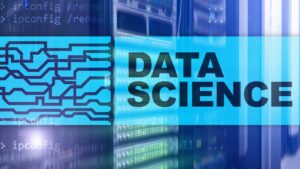Data analytics is rapidly transforming how businesses operate, making it an indispensable tool in the modern world. Emerging trends like artificial intelligence and machine learning are poised to push the boundaries of what’s possible. These innovations will not only enhance data interpretation but also offer deeper insights, enabling companies to stay ahead of the curve. The future of data analytics is not just about collecting data; it’s about unlocking its full potential to drive smarter, more strategic decisions.
Future of Data Analytics
The future of data analytics promises innovations that transform data interpretation and decision-making processes. Several key technologies are driving these advancements.
Artificial Intelligence And Machine Learning
Artificial intelligence (AI) and machine learning (ML) enhance data analysis by automating complex processes. AI algorithms identify patterns and predict trends, while ML models improve with more data. Industries like healthcare and finance benefit from AI’s precision and ML’s adaptability, delivering accurate forecasts and personalized services.
Quantum Computing
Quantum computing revolutionizes data analytics through unparalleled processing power. Quantum computers solve intricate problems exponentially faster than classical computers. This ability enables quicker analysis of massive datasets. Fields like cryptography and pharmaceutical research leverage quantum computing for advanced data modeling and simulations, pushing the boundaries of current technological limitations.
Real-Time Data Processing
Real-time data processing offers immediate insights from streaming data. Businesses make prompt, informed decisions using real-time analytics. Technologies like Apache Kafka and Spark facilitate high-speed data processing. Applications in logistics and e-commerce benefit from real-time tracking and dynamic pricing, ensuring efficient operations and enhanced customer experiences.
 Industry-Specific Applications
Industry-Specific Applications
Healthcare
Data analytics in healthcare enhances patient outcomes and operational efficiency. Predictive analytics helps identify potential outbreaks and manage resources. AI in imaging diagnostics assists in early disease detection. Real-time data processing supports personalized treatment plans. Electronic Health Records (EHRs) provide continuous patient data flow, improving care coordination. Wearables collect health metrics, enabling proactive care.
Finance
Finance leverages data analytics to drive profitability and risk management. Predictive models forecast market trends, enhancing investment strategies. Fraud detection systems analyze transaction patterns for anomalies. Real-time analytics enables instant responses to market changes. Customer segmentation identifies profitable demographics.
Retail
Retail benefits from data analytics through enhanced customer experiences and optimized operations. Predictive analytics forecasts demand, improving inventory management. Real-time data tracks consumer behavior, personalizing marketing strategies. Insights from sales patterns identify profitable product lines. AI-driven algorithms optimize pricing dynamically.
 Ethical And Privacy Considerations
Ethical And Privacy Considerations
Data Security
Data security remains a top priority in data analytics. With the vast amounts of data collected, safeguarding this information from breaches and unauthorized access is essential. Encryption, multi-factor authentication, and secure access controls help protect sensitive data. Regulations like the General Data Protection Regulation (GDPR) and the California Consumer Privacy Act (CCPA) set strict guidelines for data handling, ensuring organizations comply to avoid hefty penalties.
Bias And Fairness
Ensuring bias and fairness in data analytics is critical. Algorithms may sometimes reflect or even amplify existing biases present in the data. This can lead to unfair treatment or discriminatory practices, particularly in areas like hiring or loan approvals. Employing diverse datasets and continuously testing algorithms for biases helps mitigate these issues.
Emerging Trends and Predictive Analytics
Predictive analytics uses statistical algorithms and ML techniques to identify trends and predict future outcomes. By analyzing past data, organizations can forecast customer behavior, detect potential risks, and optimize operations. For example, retailers can anticipate inventory needs, while healthcare providers predict patient readmissions. This trend not only enhances decision-making but also drives operational efficiency and strategic planning.
Edge Computing

Edge computing brings data processing closer to data sources, reducing latency and bandwidth usage. It processes data locally on devices like sensors and IoT units rather than in centralized data centers. This trend is crucial for real-time analytics in sectors like manufacturing and autonomous vehicles. For instance, smart factories can use edge computing to monitor equipment health and improve productivity. Its decentralized nature also offers enhanced data privacy and security.
Data Democratization
Data democratization aims to make data accessible to all employees, irrespective of technical prowess, to foster data-driven decision-making across organizations. Tools with user-friendly interfaces, such as drag-and-drop analytics software, empower non-technical users to perform complex analyses. This trend promotes a culture of data literacy, leading to better collaboration and innovation. For instance, marketing teams can easily analyze campaign performance without needing data scientists.

